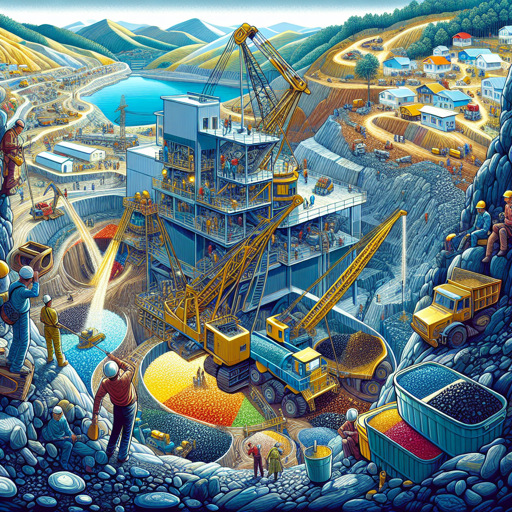Mining Impact on Local Communities: A Socio-Economic Perspective
Unraveling the socio-economic impacts of mining operations on local communities.

Introduction
Minerals form the backbone of modern civilization, and mining serves as the gateway to their procurement. However, while mining activities can boost local economies, they can also have profound socio-economic impacts on local communities. This piece seeks to shed light on these impacts, both positive and negative, and explore how they can shape the development trajectories of mining-affected communities.
The Economic Impact of Mining
Mining can be a powerful engine for economic growth. It often brings jobs, investment, and infrastructure development to otherwise remote and underdeveloped areas. However, the benefits are not always evenly distributed, and mining can also exacerbate income inequalities within communities.
| Economic Benefits | Economic Drawbacks |
|---|---|
| Job Creation | Income Inequality |
| Infrastructure Development | Economic Dependence |
| Increased Local Spending | Resource Curse |
The Social Impact of Mining
The social impacts of mining are complex and context-specific, often interwoven with the economic impacts. On the positive side, mining can improve access to social services through its contribution to public revenues. On the flip side, it can cause social disruption and conflict over resource allocation.
The Environmental Impact of Mining
Mining operations can have severe environmental impacts, including deforestation, soil erosion, and contamination of local water sources. These impacts can, in turn, have knock-on effects on local communities, affecting livelihoods and health.
“The Earth is a fine place and worth fighting for.” - Ernest Hemingway
Case Studies: The Mixed Bag of Mining Impacts
Let’s take a look at two contrasting examples:
- The Gold Rush in California (1848-1855): The gold rush brought a wave of migration and economic growth, transforming California into a prosperous state. However, it also led to the displacement of Native American tribes and severe environmental degradation.
- Diamond Mining in Botswana: Since the discovery of diamonds in 1967, Botswana transformed from one of the poorest countries in the world to a middle-income country. The government invested heavily in public services, making strides in education and healthcare.
Mitigating the Negative Impacts
Efforts to mitigate the negative impacts of mining are critical. They include implementing strong regulatory frameworks, promoting corporate social responsibility, and fostering community engagement in decision-making processes.
Conclusion
The impact of mining on local communities is multi-faceted, with potential for both advancement and adversity. Understanding these impacts is crucial for policymakers, mining companies, and communities themselves to ensure that the benefits of mining are maximized while the negative impacts are minimized.
External Reference: For further reading on this topic, visit the World Bank’s comprehensive resource on social responsibility in mining.